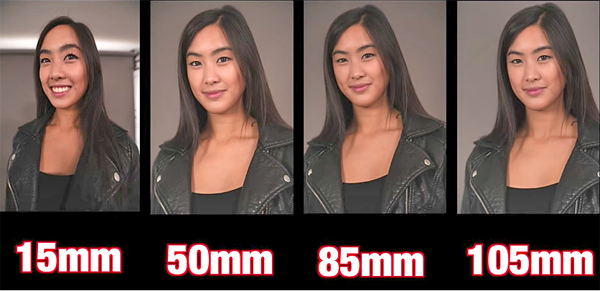
I know it’s a formula for lenses of negligible thickness and we use lens systems with many elements for photography. In your previous reply you wrote “you're talking specifics, not optical physics” I had a feeling that because I was so close and I was doing this without a gimbal, Photoshop wouldn't be able to create a perfect stitch, but it ended up working well enough.Īs you can see, we got two images with almost identical perspective distortion taken with a 15mm lens and a 70mm lens.


Without moving the camera, I swapped lenses and started creating a multi-row panorama at 70mm. The back tire that was closest to the camera looked huge and oval shaped, while the front of the back tire, which was farther away from the camera, looked much smaller. As expected the bike looked incredibly warped. To do this, I sat close to an old bike and shot it with a 15mm lens. To take this one step further, I wanted to try to do the opposite experiment as well and get a wide-angle-looking shot by stitching together a bunch of 70mm images. He then zoomed into his subject and the sun and was able to create a shot where the sun was the same size as his subject.

As he backed up, his subject got smaller and smaller, while the sun stayed for all intents and purposes the exact same size. For David's "Atlas And The Sun" photo, he placed a subject in front of the sun and started backing up. This means that the sun essentially appears to be the same size no matter where we are on the Earth. The sun is 93 million miles away, and if we wanted to make the sun appear half its size, we would need to back up an additional 93 million miles. If the background object were even farther away, we could exaggerate this even more. It appears in the animation of Patrick that he is remaining the same size while the background is growing, but in reality, Patrick is getting smaller and I am zooming or cropping in to make him appear to be the same size, and when I do, it's cropping out more and more of the gazebo. The gazebo will be half of its original size in the frame (50/100) while Patrick will be 1/50th of his original size in the frame. When I finally back up 50 feet away from Patrick, I will now be 100 feet away from the gazebo. As I move back, Patrick is becoming much smaller in the frame at a faster rate than the gazebo behind him simply because he is closer to the camera. If I move back one foot so that I'm two feet away from Patrick, his head will now be half the size in the frame while the gazebo will only be 1/51st smaller - less than 2 percent. Let's say that my first shot of Patrick with a 15mm lens was taken 1 ft from the front of his face and the gazebo was 50 ft away from the camera behind him. Let's use my animation of Patrick in front of the gazebo as an example. Your subject might be close while the background is farther away. The fundamental principle boils down to this: to double or halve the size of an object in your frame, you will have to double or halve the distance of the camera to that object, but not everything in the frame is the same distance away from the camera.

I reproduced this example in the video above when I took a picture of David with both a wide and telephoto lens. Two years ago, I wrote an article titled " Lens Compression Doesn't Exist," and in that article, I created an animated gif to prove that a wide angle lens cropped in and a telephoto lens will create the same amount of foreground and background "compression" if the camera remains in the same place. These noticeable differences lead most photographers to believe that wide angle lenses are distorting a scene while telephoto lenses are compressing a scene, but they are overlooking what is actually happening: the camera is moving. In reality, the distance from the camera to the subject is what is creating these distortions. This is called "extension distortion." If you back up and take a picture of the same person with a telephoto lens, the subject and background will become more "compressed" meaning that the foreground and background will appear closer together. We all know that if you shoot a portrait of someone's face up close with a wide angle lens, their face will be distorted and the background will appear extremely far behind them. Let's dive a little deeper into perspective distortion. We've talked about this before on Fstoppers, but there still seems to be some debate about lens compression.


 0 kommentar(er)
0 kommentar(er)
